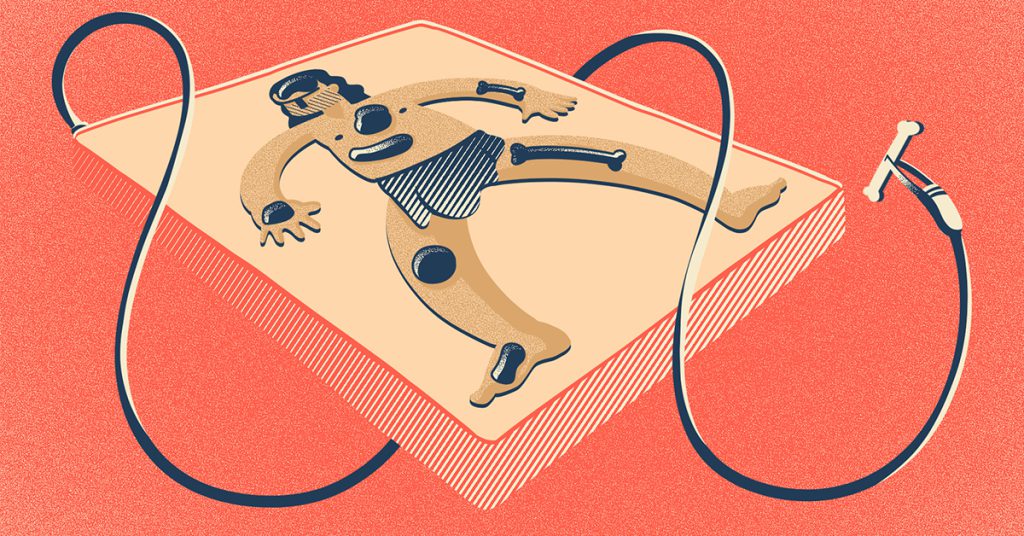A Head-to-Toe Tour of the Neanderthal
In 1856, a scattered collection of bones was found in the Feldhofer Cave of the Neander Valley in Germany. Scientists had never seen anything like it. The skull resembled that of a human, but it had a low, receding forehead and pronounced ridges of bone above the brow. The bones were unusually thick and strong.
Opinion was divided about how these remains should be classified. A similar collection of bones, found in Belgium in 1830, had been (incorrectly) identified by paleontologist August Mayer as the remains of a Cossack soldier from the war of 1812 who had spent his life on horseback, despite a case of rickets. The dense ridges of bone over that skeleton’s brow were, Mayer insisted, the result of the soldier’s constant agonized brow-furrowing.
But the finds from the Neander Valley in 1856, along with other finds in Europe in the early 1900s, made it evident that these individuals belonged to a population that was different from Homo sapiens. It was a species (or subspecies, some would say) with robust bones, an elongated rear cranium, a forward-jutting face, and a receding chin. The Neanderthal.
In the years since their discovery, the Neanderthal has become something of a celebrity. New finds and innovative methods have been steadily filling in the gaps in our picture of life in the Middle Paleolithic, the period between approximately 250,000 and 40,000 years ago when Neanderthals occupied Europe. Much of this research has trickled into the public consciousness. A brief Google search returned a list of dozens of books, both fiction and nonfiction, as well as docudramas and movies on the subject of Neanderthals and our relationship to them.
Why do we care about Neanderthals? In a way, understanding their population has helped us to understand what it is to be human. How were we different? How were we similar? Recent research has even shown that Neanderthals and early Homo sapiens mated; a percentage of Neanderthal DNA lives on in some modern humans today.
These comparisons are intriguing, but there is also a great deal to say about Neanderthals in their own right. Many extinct animals leave few clues about their lives; biologists are forced to extrapolate from the existing relatives to make a guess at their behavior. Neanderthals, on the other hand, left behind thousands of years’ worth of behavioral detritus in the archaeological record. They left their stone tools, along with the tiny chips of stone that they flaked off in the process of creating those tools, providing insight into the manufacturing process. Neanderthals were also, apparently, messy eaters; they left their caves full of the remains of the animals they hunted and butchered.
Equally informative is the Neanderthal body itself. Written into Neanderthal bones is a wealth of clues not just about what they looked like but also how they lived. Bones record traces of the things that happen over an individual’s lifetime: growth, aging, injuries or illnesses sustained, or muscles gained. If enough of a skeleton is preserved, it can be used to determine an individual’s sex and approximate age at the time of death. Chemical analysis of bones can tell us the elevation at which an individual lived and/or the type of diet they likely ate. Teeth can reveal something about diet and health. Fossil specimens can reveal intimate details like whether an individual was right- or left-handed, how they dealt with physical pain, or how their voice might have sounded.
This series of columns will lead readers on a head-to-toe tour of the Neanderthal body, one body part (and one story) at a time. I’ll be your tour guide, walking you through the research and methods that have unlocked each piece of this Paleolithic puzzle. From tiny Neanderthal brain cells to the heel bone, we will reassemble the pieces of one of our closest ancient relatives.
This column is part of an ongoing series about the Neanderthal body: a head-to-toe tour. See our overview page.


































